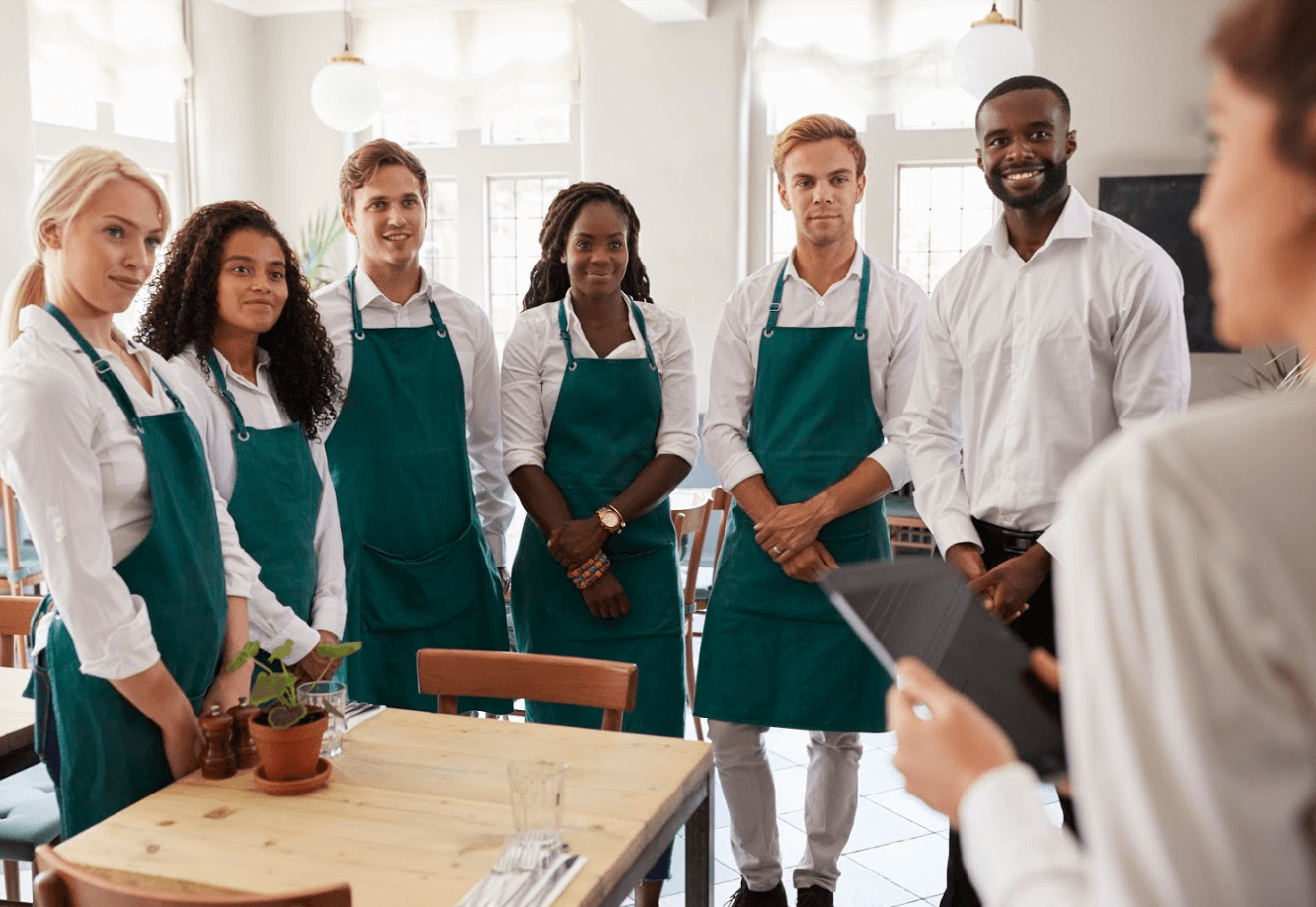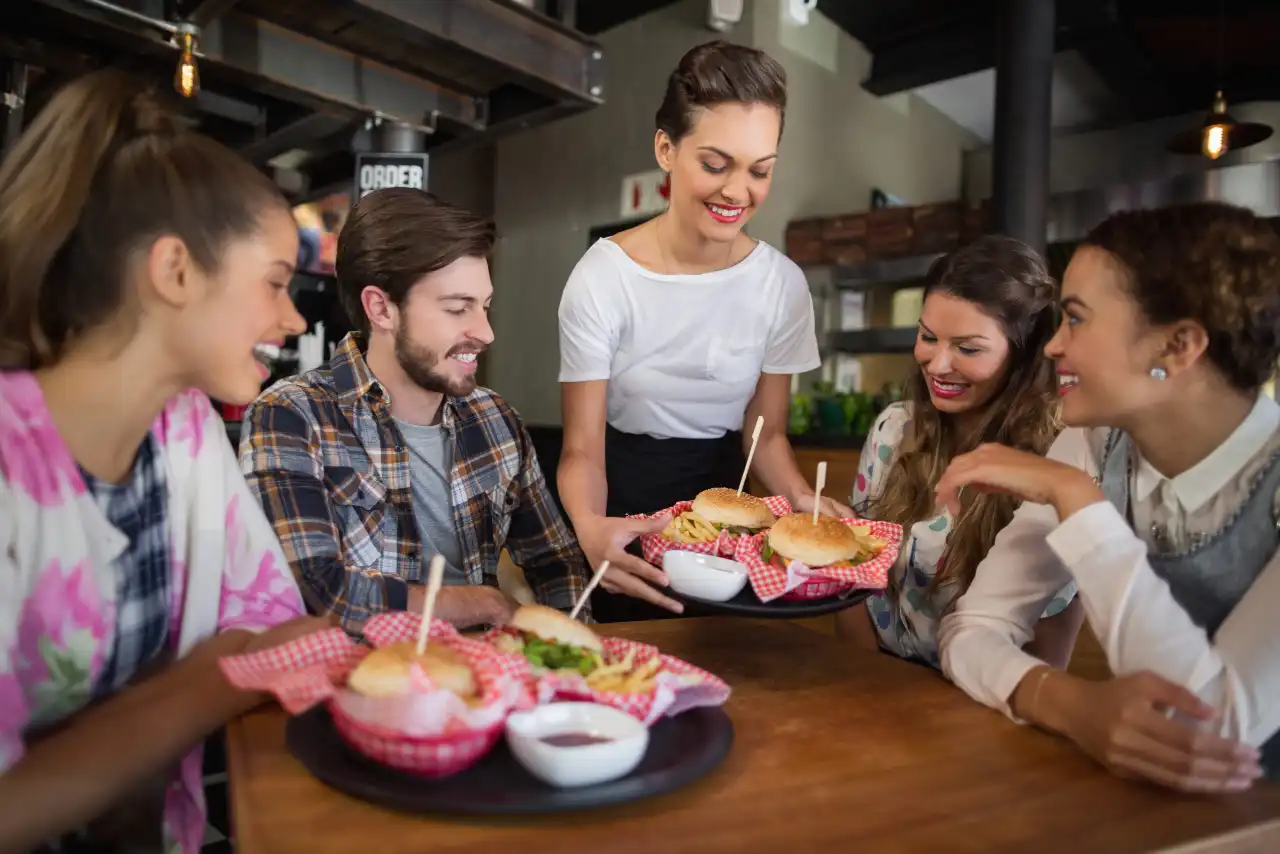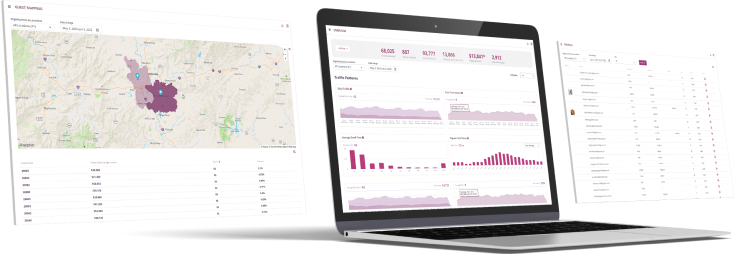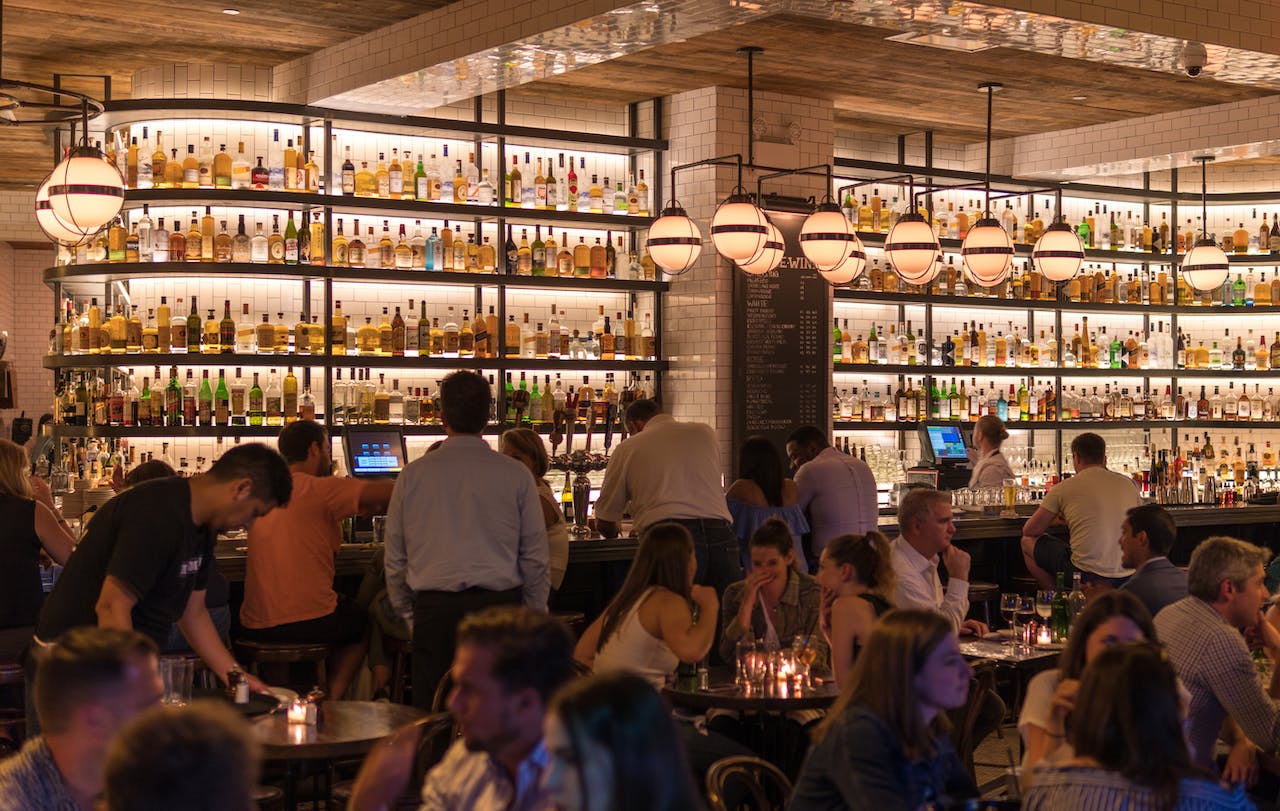In the restaurant industry, where the competition is as diverse and dynamic as the menus offered, merely having a good location or a unique theme isn’t enough to guarantee success.
You, as a restaurant owner or marketer, are acutely aware that the secret ingredient to thriving in this saturated market is not just about serving great food or creating a cozy ambiance. It’s about cultivating unwavering customer loyalty.
According to a survey, experts forecast a 70% chance of a U.S. recession in 2023, during which approximately 41% of consumers plan to reduce their expenditure on restaurants, bars, and food delivery services.
Customer loyalty is the key to getting through this time unscathed. This is where personalization, fueled by the intelligent use of guest data, comes into play.
Here, we’ll explore how gathering and analyzing guest data isn’t just a trend, but a pivotal strategy in designing tailor-made experiences that resonate with your guests on a personal level. We’ll delve into practical ways to collect valuable insights, from preferences in dishes to favorite dining times, and how to utilize this information to make your guests feel like VIPs every time they visit.
But it’s not just about the in-restaurant experience. We’ll also uncover how you can extend this personalization to your restaurant marketing and communication strategies, ensuring that your messaging hits the right note and strengthens the bond with your patrons even when they are not seated at your tables.
You’ll be equipped with the knowledge and tools to turn casual visitors into loyal patrons who don’t just return, but also become enthusiastic ambassadors of your brand.
First, let’s take a look at what you can do on-site.
The Cornerstones of Customer Loyalty in Restaurants
High-Quality Service: The Foundation
High-quality service begins with well-trained staff. Training should encompass more than just the basics of service. It needs to instill a culture of hospitality and a deep understanding of your brand’s values.
Effective training includes role-playing scenarios for handling difficult situations, understanding the nuances of body language and verbal communication, and learning to anticipate guest needs.
This comprehensive approach ensures that each team member embodies the essence of exceptional service.

Examples of excellent service practices include personalized greetings, remembering repeat customers’ preferences, attentive but unobtrusive service, and prompt handling of any issues.
A key practice is empowerment: allowing staff to make on-the-spot decisions to resolve guest concerns.
This could be as simple as offering a complimentary dessert to a guest who experienced a minor inconvenience, illustrating a commitment to guest satisfaction.
Consistency in Food Quality: The Expectation
Consistency in food quality is crucial for building trust with your guests. It’s not just the first impression that counts. Repeat guests expect the same level of quality every time they visit.
Maintaining high food standards involves a deep commitment to quality at every stage, from sourcing ingredients to preparation and presentation.
To ensure consistent quality, standardize recipes and cooking procedures. Regular training and audits can help maintain these standards. Using quality ingredients and having a system for regular checks on food quality, from delivery to storage to preparation, are essential.
Adopting technology, like digital temperature logs and inventory management systems, can also aid in maintaining consistent standards.
Creating a Pleasant Dining Experience: The Atmosphere
The ambiance of a restaurant plays a significant role in the overall dining experience.
It’s not just about aesthetics, it’s about creating an environment that resonates with the senses. Factors like lighting, music, décor, and seating arrangements all contribute to the mood and comfort of the dining experience.
Innovative ideas to enhance the dining experience include thematic decorations, interactive dining experiences like chef’s tables or open kitchens, and incorporating technology for ambiance control (like adjustable lighting and music playlists).
The cornerstones of customer loyalty in restaurants revolve around exceptional service, consistent food quality, and a captivating dining atmosphere. By focusing on these key areas, restaurants can create a loyal customer base that not only returns but also advocates for their brand.

The Emotional Connection: Making Every Guest Feel Welcome
Creating an emotional connection with guests is crucial in the restaurant industry. This connection goes beyond mere satisfaction with food and service, it taps into the deeper emotional drivers that make a dining experience truly memorable and personal.
Understanding the Emotional Drivers of Dining Out
Seeking a Unique Experience: Many guests are looking for something more than just a meal. They seek a unique experience that they can share with others or cherish as a personal memory. This could be a desire for novelty, a sense of adventure, or the pleasure of trying something new and different.
Celebrating Special Occasions: Dining out is often associated with celebrations and special events. Recognizing and catering to these occasions can create a lasting emotional bond with guests.
Desire for Social Connection: Restaurants often serve as social hubs. The desire for connection – be it with family, friends, or business associates – is a strong emotional driver. A welcoming, communal atmosphere can enhance this aspect of dining out.
Techniques to Create Emotionally-Charged Experiences
Personalized Greetings and Farewells: Using a guest’s name and remembering previous interactions can make them feel recognized and valued. A warm greeting upon arrival and a sincere thank you at departure leave lasting positive impressions.
Attention to Special Occasions: If you know a guest is celebrating a special occasion, small gestures like a complimentary dessert or a personalized note can make a big impact. This shows that you value not just their patronage but also their life’s important moments.
Creating a Story Around Your Cuisine: Every dish has a story – about its origins, ingredients, or the inspiration behind it. Sharing these stories can turn a meal into an immersive experience, adding depth and character to the dining experience.
Examples of Restaurants Excelling in This Area
A Restaurant Celebrating Local Culture: There are restaurants that base their theme and menu around local history and culture, offering guests an immersive experience into the region’s heritage. This not only provides a unique dining experience but also evokes a sense of pride and connection with the local community.
Themed Dining Experiences: Some establishments offer themed dining experiences where guests are transported to different times, places, or settings. This could range from a 1920’s speakeasy to a futuristic sci-fi setting. The key is in the details – decor, music, uniforms, and menus all contribute to a captivating and emotionally engaging environment.
Interactive Dining Experiences: Interactive experiences like chef’s tables or cooking demonstrations add an element of excitement and engagement. Guests enjoy the spectacle and the opportunity to interact directly with the people behind their food, creating a personal and memorable experience.
Incorporating these elements into your restaurant experience can transform routine dining into an emotionally rich and memorable event.
By understanding and catering to the emotional drivers of your guests, you can create a deeper sense of belonging and loyalty, encouraging them to not only return but also to share their exceptional experiences with others.

Unleashing the Power of Personalization: How Restaurants Can Use Guest Data to Enhance the Dining Experience
In the ever-evolving world of the restaurant business, understanding your guests is not just an advantage – it’s a necessity. Now, let’s explore how leveraging guest data can transform your restaurant into a place where every guest feels like a VIP.
Understanding Your Guests: The First Step to Personalization
The journey to personalization begins with data collection. This isn’t just about gathering basic information like names and birthdays. It’s about painting a comprehensive picture of your guests’ dining habits and preferences.
What are their favorite dishes? Do they have any dietary restrictions? When do they prefer to dine, and how often do they visit or order online? The answers to these questions lie in the data.
Equally important is feedback and reviews. What are your guests saying about their experiences?
Then there’s transactional data which reveals not only spending patterns but also popular menu items and average bill sizes. In today’s digital age, social media interactions also provide invaluable insights.
Tools of the Trade: Harnessing Technology for Data Collection
Data collection is no longer a manual, cumbersome process, thanks to technology. Reservation, online ordering, and POS systems, for example, are gold mines for tracking bookings and transactions. Customer Relationship Management (CRM) software like Bloom Intelligence stands at the forefront of aggregating and analyzing this guest data.
Meanwhile, online surveys and feedback forms are great for gathering direct guest feedback, and social media analytics tools can help you understand and engage with your patrons’ online behavior.
Bloom collects and aggregates guest data from these and other sources, such as website forms, social media, WiFi logins, and online review websites.
With all the data in one platform, it becomes easy to discover the true 360-degree view of your guests, also known as a single customer view. Then you can use the automated marketing and reputation management tools to send automated, personalized marketing campaigns and reputation management messaging to your guests based on guest data and feedback. More on this below.

Crafting Tailored Experiences
Once you’ve collected the data, it’s time to put it to use. Imagine greeting a guest by name as they walk in, guiding them to their favorite table, and having their preferred drink ready in minutes. Or consider the impact of customizing menu recommendations based on past orders – it’s about making each guest feel special.
This level of service goes beyond the walls of your restaurant. Personalization extends to restaurant marketing strategies as well. Tailored emails and SMS campaigns can make your guests feel like they’re part of an exclusive club.
This drives the emotional connection and strengthens loyalty, customer lifetime values, and your bottom line.
Data-Driven Decision Making
The data you collect serves a greater purpose – it informs strategic business decisions. From tweaking your menu to align with popular trends to setting up targeted marketing campaigns, data drives success.
Let’s take a look at real-life success stories. There are restaurants that have completely revamped their menus based on guest feedback and online reviews, leading to increased sales and customer satisfaction. Others have used data to streamline restaurant operations, reducing wait times and enhancing the overall dining experience.
Guest data is more than just numbers and statistics. It’s the key to unlocking a personalized experience with your brand that leaves a lasting impression on your guests.
By understanding and catering to their preferences, you turn routine diners into regulars and loyal advocates of your brand. In the competitive world of restaurants, personalization isn’t just an option – it’s the secret ingredient to success.

Extending Personalization Beyond the Restaurant: A Guide to Building Lasting Guest Relationships
In today’s restaurant landscape, where every restaurant vies for attention, personalization has emerged as a key differentiator. But what happens when your guests step out of your restaurant?
How do you ensure that the personalized experience doesn’t end with the meal?
The answer lies in extending this personalization into your marketing and communication strategies. Here, we will explore how restaurants can use guest data to craft personalized marketing strategies and build long-term relationships with their guests.
Personalized Marketing Strategies: Using Data for Targeted Marketing
The data collected from your guests is a treasure trove for targeted marketing. By analyzing this data, you can create tailored advertising campaigns that resonate with your guests’ preferences and dining habits.
For instance, if your data shows a significant number of patron enjoy vegetarian dishes, you could create a campaign focusing on your restaurant’s unique vegetarian offerings and send it only to those who fit that description.
This approach ensures that your marketing efforts speak directly to the interests and needs of your audience, making your messaging more effective and engaging. Let’s look at some real-world examples.
A restaurant known for its seafood specials used guest data to identify guests who frequently ordered seafood dishes. They then launched a targeted email campaign offering special discounts on seafood dinners, which resulted in a significant increase in bookings.
Another example is a café that used guest data to understand the popularity of their brunch service among young adults. They created a marketing campaign with enticing images and testimonials focused on their brunch offerings, leading to a noticeable uptick in brunch reservations.
Building Long-Term Relationships Through Communication
Email and SMS are powerful tools for maintaining communication with your customers outside the restaurant. Regular, personalized restaurant email marketing can keep your guests informed about new menu items, special events, or exclusive offers.
Social media platforms, on the other hand, allow for more dynamic engagement. Sharing behind-the-scenes content, hosting live Q&A sessions with chefs, or running contests can also keep your audience engaged and connected to your brand.
Engagement doesn’t stop at online interactions. Hosting events such as cooking classes, wine tastings, or participating in community events can offer additional touch points to interact with your patrons.
Collaborations with local businesses or charities can also elevate your brand’s presence in the community and keep your restaurant in the minds of your customers.
Additionally, offering a restaurant loyalty program can encourage repeat visits and foster an emotional sense of belonging among your guests.
Personalization is a powerful tool that extends far beyond the dining table. By leveraging guest data for targeted marketing, and maintaining regular, engaging communication through various channels, restaurants can build lasting relationships with their guests.
This approach not only enhances customer loyalty but also turns casual diners into ardent advocates for your brand. In today’s competitive environment, personalization is not just about creating a unique dining experience, it’s about nurturing a community of loyal patrons.

In Conclusion
It’s clear that the landscape of dining and guest engagement is undergoing a profound transformation. Personalization, once a mere value-add, has now become a cornerstone in the quest for customer loyalty and business success.
The future of restaurant marketing and service is undoubtedly data-driven and customer-centric.
By adopting a personalized approach in every aspect of your business, you not only enhance your guests’ dining experiences but also set your restaurant on a course for long-term success and industry leadership.
The era of personalized dining is here, and it’s time to position your restaurant at the forefront of this exciting and rewarding revolution.

Discover Bloom Intelligence
Bloom Intelligence is an AI-powered restaurant marketing platform that includes a powerful customer data platform, automated guest data collection, marketing automation, and reputation management tools.
Guest data is collected from many different sources and aggregated into one single platform, making it simple and easy to analyze and segment your restaurant’s guest personas for your restaurant digital marketing and operations decisions.
Data is collected from sources like WiFi logins, online reservation systems, online ordering platforms, POS systems, website forms, social media and more.
Bloom makes guest data collection effortless, allowing you to quickly execute the strategies listed above, saving you time, increasing customer lifetime values, attracting new guests, improving your reputation, and boosting your bottom line.
Click Here to Schedule a Free Online Demo, or call 727-877-8181 to see how we can help you save time and drive tangible results for your restaurants.




.svg)